Picture this: You’ve finally found the perfect shed to organize your backyard. This charming addition will perfectly complement your home. You’ve visualized the space, even mentally arranged your tools and gardening supplies. Then, bam – you hit a roadblock: shed permits. The seemingly simple task of adding a shed suddenly becomes a bureaucratic maze.
Navigating the world of building permits can feel incredibly frustrating.

Still, you deserve to begin your project without unnecessary stress or worry, confident that you’re following all local regulations. At Weaver Barns, we’re here to help you secure that feeling of calm and control in your own backyard.
This comprehensive guide will unravel the complex world of shed permits in Pennsylvania. We’ll answer the key questions about when you need a permit, guide you on checking local zoning laws, and provide detailed steps on how to apply for a permit. We’ll also discuss shed size and placement restrictions by county and highlight common mistakes to avoid.
Our team has years of experience guiding homeowners like you through the often complex world of Pennsylvania building regulations. With our expertise, you can embark on your project well-informed and prepared.
Let’s dive in.
Table of Contents
Do You Need a Permit for a Shed in Pennsylvania?
First, let’s define what constitutes a “shed.” Generally, sheds are smaller, freestanding structures used for storage, gardening equipment, or workshops. However, the definition can vary depending on the local municipality.
So when is a permit necessary? In Pennsylvania, whether or not you need a permit largely depends on your shed’s size and intended use.
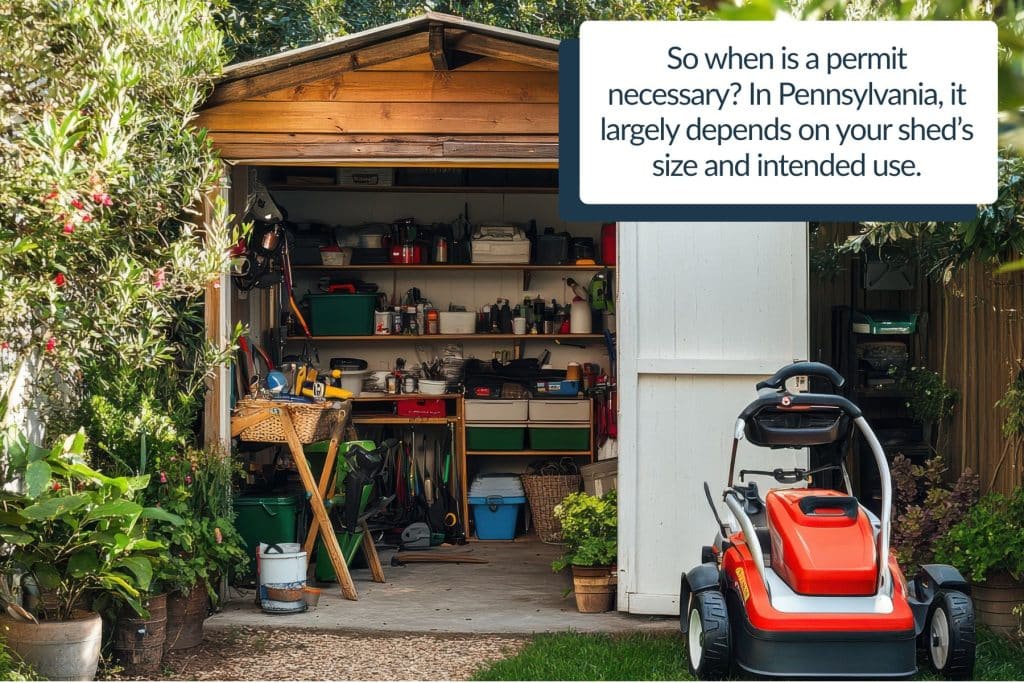
Most municipalities require permits for sheds exceeding a certain square footage (often 100-200 square feet, but this can vary widely). Generally, small sheds used for storage and that are less than 100 square feet might not require a permit. However, a permit is likely required if your shed will be larger, will be used for anything beyond basic storage space, or will include electrical and plumbing systems. (To help you choose the size of your shed, read our blog “Choosing the Right Size Storage Shed for Your Needs.”)
Checking Local Zoning Laws and Permit Requirements
Before breaking ground, it’s important to understand that regulations vary significantly between municipalities. It’s essential to check your local zoning laws and permit requirements because state rules are general guidelines, and local ordinances are what you must follow. You should always verify the specific requirements in your area to ensure compliance. Ignorance is not bliss when it comes to legal obligations, and failing to obtain a necessary permit can lead to fines, removal of the shed, or legal complications.
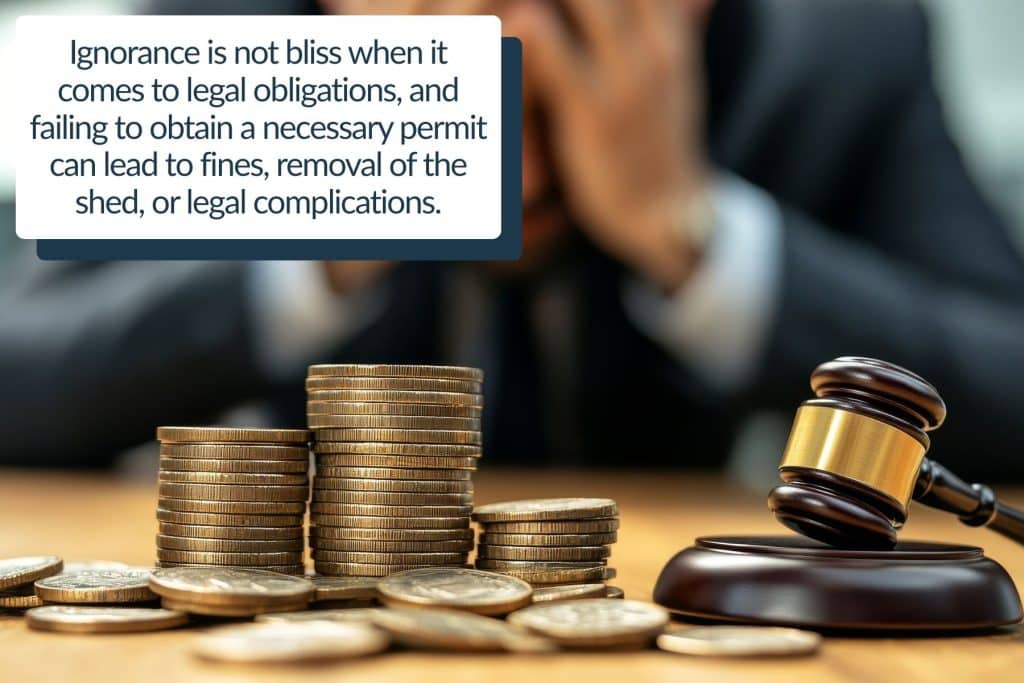
This is where many homeowners trip up – local zoning can impact everything from the shed’s size to its location on your property.
Each municipality in Pennsylvania has its own set of zoning laws. These laws dictate what structures can be built and where. Most municipalities will have their zoning codes and permit application processes clearly outlined. Understanding these details is essential. To start, visit your local municipality’s website or office to obtain the zoning map and regulations. They will provide detailed information on setbacks (the minimum distance from property lines) and other restrictions that could affect your shed project.
Remember, zoning laws ensure community standards are met and protect property values. Adhering to them will pave the way for a smoother project and construction process.
Understanding the Restrictions: Shed Size and Placement in PA Counties
Pennsylvania’s diverse geography means building restrictions vary widely from one county to another. For instance, urban counties like Montgomery or Allegheny might have stricter regulations compared to rural counties like Potter or Centre.
Typical restrictions and terms you might encounter in obtaining a permit include:
- Setback requirements – Local restrictions might specify minimum distances from property lines, neighboring buildings, or public roads.
- Height limitations – Some municipalities specify maximum height limits for shed walls and roofs.
- Restrictions on utility connections – Permits are often required if you plan to add electricity, plumbing, or other utilities to your shed.
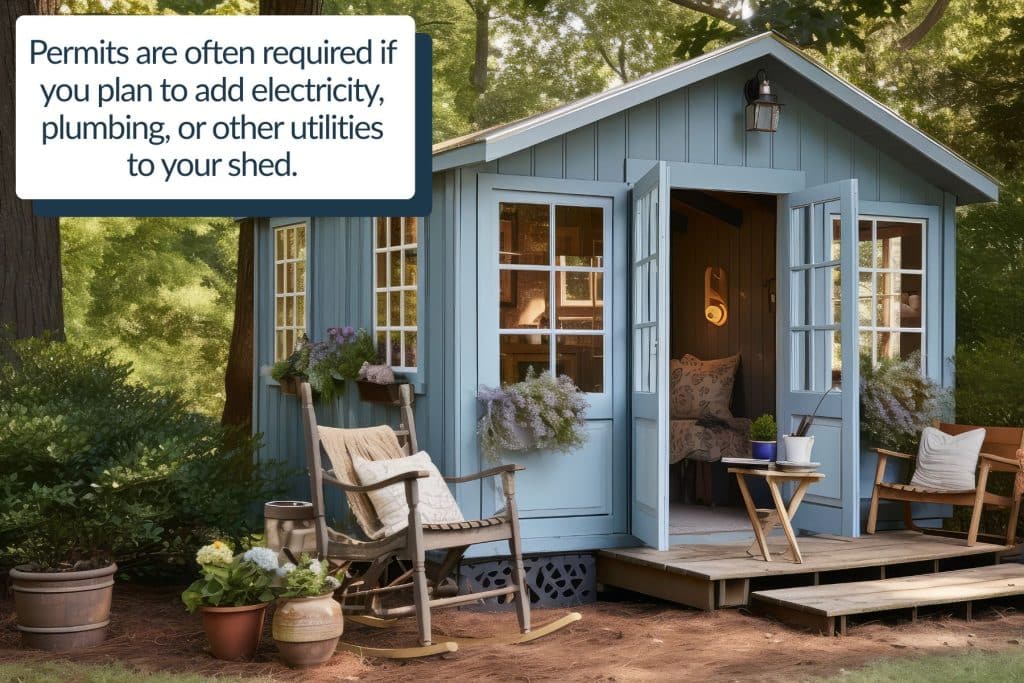
- Zoning ordinances – These are local regulations that dictate how land can be used, including where sheds can be placed and maximum shed size or limits on usage without a permit.
- Site plan – A drawing showing the shed’s location on your property, including its dimensions, setbacks, and other relevant information.
- Pennsylvania Uniform Construction Code (PUCC) – The state-wide code governing building construction in Pennsylvania.
- Easement – A legal right that allows someone to use another person’s land for a specified purpose, such as access or utilities.
Knowing these terms and restrictions beforehand helps you plan the layout and design of your shed. This ensures you don’t face any unexpected hurdles after you’ve already begun construction.
How to Apply for a Shed Permit in Pennsylvania
Once you’re familiar with the zoning laws and have determined that you need a permit, the next step is applying for one. Here’s a straightforward process:
- Gather Necessary Documents: These typically include a detailed site plan showing the shed’s proposed location on your property, including distance from property lines, dimensions, and intended use. Other documents might include construction drawings and details about materials. Accuracy is paramount here – incorrect information could cause significant delays or even rejection of your application.
- Submit Application: Applications can often be submitted online or in person at your local zoning office.

Be prepared to pay a fee, which varies depending on your location. You may need to show proof of property ownership. - Inspection and Approval: After submission, your application will be reviewed. If everything aligns with local regulations, you’ll receive approval, sometimes after a site inspection.
Remember, communication is key. It’s wise to contact your local zoning office directly for any clarifications or questions about the application process.
The time required to obtain a shed permit varies depending on factors like your application’s complexity and your local municipality’s workload. Typically, the process takes a few weeks, but it can sometimes take longer. Incorporate the time required for permit approval into your overall project schedule. Careful planning minimizes delays.
Avoiding Common Mistakes in Shed Installation
Though the bureaucratic process might feel daunting, being thorough can prevent headaches. Many homeowners make common mistakes during the shed permit and construction process.
Here are some common mistakes to sidestep:
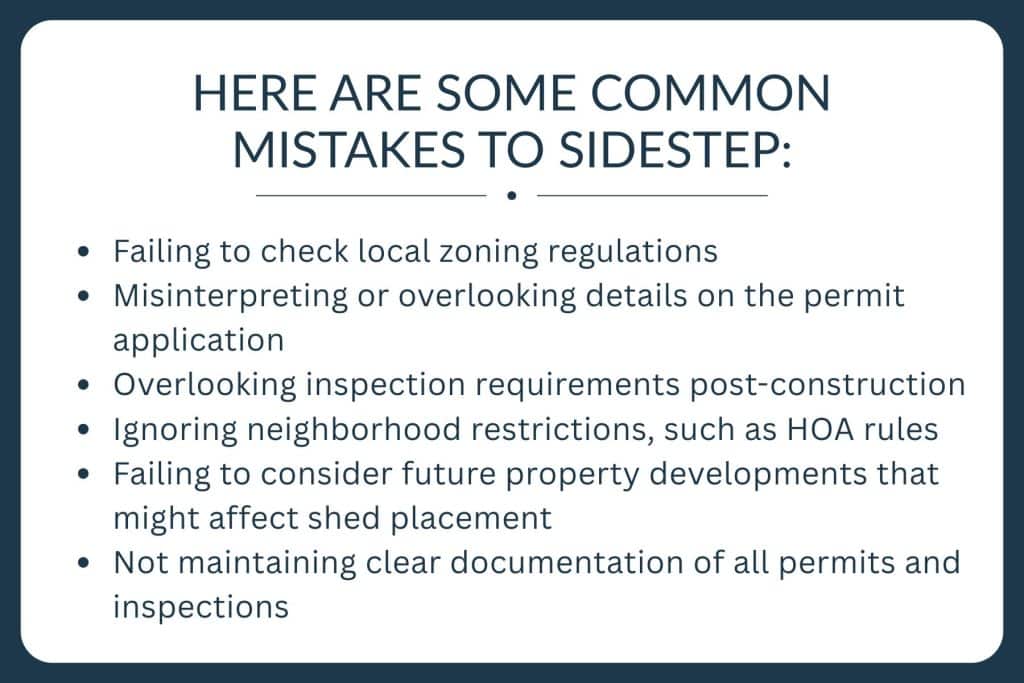
- Failing to check local zoning regulations
- Misinterpreting or overlooking details on the permit application
- Overlooking inspection requirements post-construction
- Ignoring neighborhood restrictions, such as HOA rules
- Failing to consider future property developments that might affect shed placement
- Not maintaining clear documentation of all permits and inspections
To avoid these pitfalls, diligently research your local regulations, carefully review your application before submitting it, and always obtain the permit before starting construction. Successfully avoiding these mistakes saves money and ensures your shed remains a lasting addition to your property.
Conclusion: Your Pathway to a Smooth Shed Project
In summary, understanding the shed permit process in Pennsylvania requires navigating local zoning laws carefully. These include size and placement restrictions and necessary permit applications. You can ensure a smooth, compliant, and stress-free shed installation by staying proactive and informed.
Need further guidance or help with applications? At Weaver Barns, our knowledgeable team is here to support and guide you at every step of your shed-building journey.
Start your project the right way, free of hassle and uncertainty, knowing you’ve taken all the necessary steps to comply with Pennsylvania’s regulations.
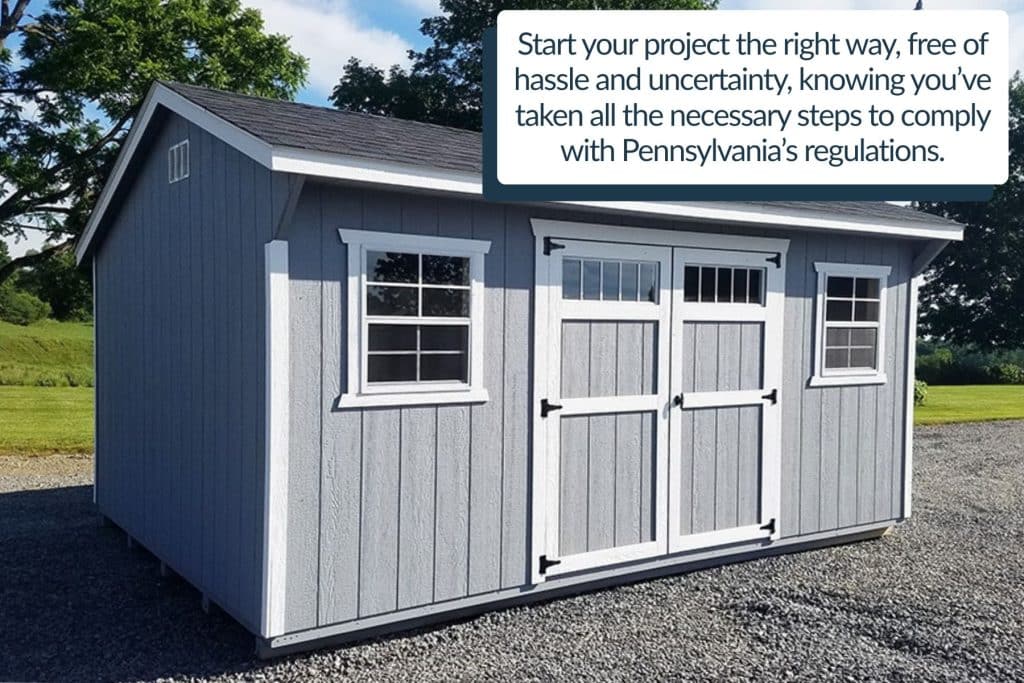
Prepare, plan, and proceed with confidence.
Contact us today for more information. We look forward to hearing from you!






